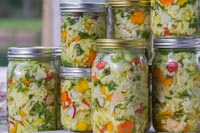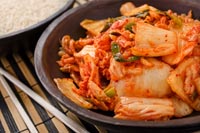Eating Well for Super Immunity in the Winter Months
/A healthy immune system is vital for helping your body deal with infections caused by viruses, bacteria, fungus, and environmental toxins. As the winter months approach, it becomes even more important to support your immune system by consistently eating a balanced diet, exercising, and making healthy lifestyle choices. But the real fuel for a strong immune system is using food as medicine.
Super Soup
An immunity-boosting diet includes light, easily digestible meals throughout the day, especially soup. A myriad of health benefits and flavors are derived from the herbs, vegetables, and broth. Soups also can help curtail the onset or ease the symptoms of colds and flu. Look for soups that include immunity-enhancing ingredients such as ginger, onion, garlic, mushrooms, and a variety of veggies and herbs in a broth-base. As always, food made from scratch is best!
Super-Immunity Diet Guidelines
- Include healthy fats such as extra virgin olive oil.
- When it comes to seasoning your foods, incorporate a variety of herbs and spices for flavor.
- For veggies, choose steamed broccoli, cauliflower, cabbage, carrots, leafy greens, and sweet potatoes.
- Fermented foods such as miso and yogurt help promote healthy intestinal flora and combat harmful bacteria in the GI tract.
- Limit red meat; instead, eat moderate amounts of fish and poultry.
- It's also smart to limit sugar in your diet. Studies have shown excessive sugar intake can interfere with optimal immune system function.
- As far as beverages, the constituents in green tea have been shown to be both anti-inflammatory and immune enhancing.
Cheers to your good health this winter!
Image Attribution: klenova/bigstockphoto.com
References



